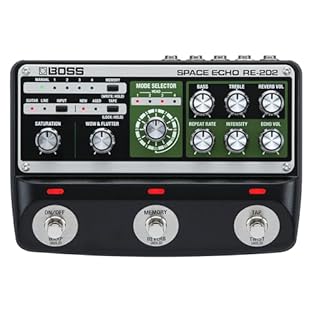Tasty Pedals made by JHS Pedals
JHS Pedals is an American boutique guitar effects pedal company founded by Josh Scott in 2007.
Known for its innovative designs and high-quality craftsmanship, JHS Pedals has become a prominent name in the pedal industry, offering various effects including overdrives, distortions, fuzzes, delays, and modulation. The company is particularly celebrated for its ability to blend classic tones with modern features, often incorporating unique twists on traditional effects. JHS Pedals are also recognized for their reliable performance and distinctive visual designs, making them a favourite among musicians of all levels.
Josh is known for his educational and entertaining content on the history and design of guitar pedals, further contributing to the brand’s influence and appeal in the guitar community.
Just Pedal Ingredients.
Booster — A booster is an effects pedal used by guitarists to increase the overall level or volume of their signal, often to enhance certain aspects of their tone or to push an amplifier into overdrive.
By amplifying the guitar’s signal, a booster can make solos stand out more prominently in a mix, or drive an amp harder for a more aggressive sound.
Boosters come in various forms, including clean boosters, which simply raise the volume without altering the tone, and overdrive or distortion boosters, which add some level of grit and warmth.
Some booster pedals also feature tone controls to adjust the EQ, allowing players to shape the frequency response and fine-tune their sound.
They are a versatile tool for achieving greater dynamic range and tonal flexibility in both live performances and studio recordings.. Delay — A delay pedal records your signal and plays it back after a set time, creating echoes that can range from tight, slapback repeats to long, atmospheric trails. It’s one of the most versatile effects, used to thicken tones, add rhythmic depth, or build spacious, ambient layers. Analogue delays offer warm, decaying repeats that blend naturally with your tone, while digital units provide pristine echoes with precise control over time, feedback, and mix levels.
From classic rockabilly and tape-style echoes to modern looping and shimmer effects, delay pedals have become essential tools for shaping sound. They can make solos soar, rhythms pulse, or transform simple chord progressions into cinematic textures. Whether used subtly to add dimension or boldly to create soundscapes, a good delay pedal can completely redefine the feel and atmosphere of your music.. Echo — An echo pedal, also known as a delay pedal, is a type of guitar effects pedal used to create repetitions or echoes of the original guitar signal. Echo pedals are popular for adding depth, ambiance, and rhythmic patterns to guitar tones, and they are widely used across various music genres, from rock and blues to ambient and experimental.
Here are the key features and functions of an echo pedal:
1. **Delay Time**: This control adjusts the amount of time between the original signal and the delayed signal. Longer delay times result in more pronounced echoes, while shorter delay times produce tighter, slapback-style effects.
2. **Feedback (or Regeneration)**: The feedback control determines the number of repeats or echoes produced by the delay pedal. Increasing the feedback setting results in multiple repeats, creating a cascading effect of echoes. Careful adjustment of the feedback control allows you to dial in the desired amount of repetition without overwhelming the original signal.
3. **Mix (or Blend)**: The mix control adjusts the balance between the original (dry) signal and the delayed (wet) signal. Higher mix settings emphasize the delayed signal, while lower mix settings maintain the clarity and integrity of the original signal. This control allows you to blend the delayed signal with the dry signal to achieve the desired balance and level of effect.
4. **Tap Tempo**: Some delay pedals feature a tap tempo function that allows you to set the delay time by tapping a button in rhythm with the music. This feature is particularly useful for synchronizing the delay effect with the tempo of a song or performance.
5. **Modulation**: Many delay pedals include modulation controls that add modulation effects, such as chorus or vibrato, to the delayed signal. Modulation can add warmth, depth, and movement to the delay effect, creating a more immersive and dynamic sound.
Echo pedals offer several creative uses and applications for guitarists:
– **Spatial Effects**: By adjusting the delay time, feedback, and mix controls, echo pedals can create spacious, atmospheric effects that simulate the sound of a room, hall, or cavern. These effects add depth and dimension to guitar tones, creating a sense of space and ambience.
– **Rhythmic Patterns**: By syncing the delay time with the tempo of a song using tap tempo or preset rhythmic subdivisions, echo pedals can produce rhythmic patterns and textures that enhance the groove and feel of a performance.
– **Texture and Movement**: By introducing modulation effects to the delayed signal, echo pedals can add texture, movement, and character to guitar tones. Modulated delays create swirling, shimmering effects that enrich the sound and captivate the listener’s ear.
Overall, echo pedals are versatile tools that offer a wide range of creative possibilities for guitarists. Whether used subtly to add depth and ambience or used more prominently to create rhythmic patterns and textures, echo pedals can enhance your guitar tone and inspire new musical ideas.. Tape — Tape delay is a type of echo effect that recreates the sound of vintage tape-based delay machines. It works by simulating the way magnetic tape loops used to record and replay a signal with natural warmth, slight pitch fluctuation, and gentle decay. The result is a smooth, organic echo that feels alive and musical, often with subtle modulation and soft saturation that modern digital delays can’t fully replicate.. w/.
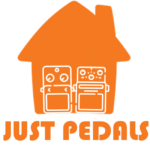
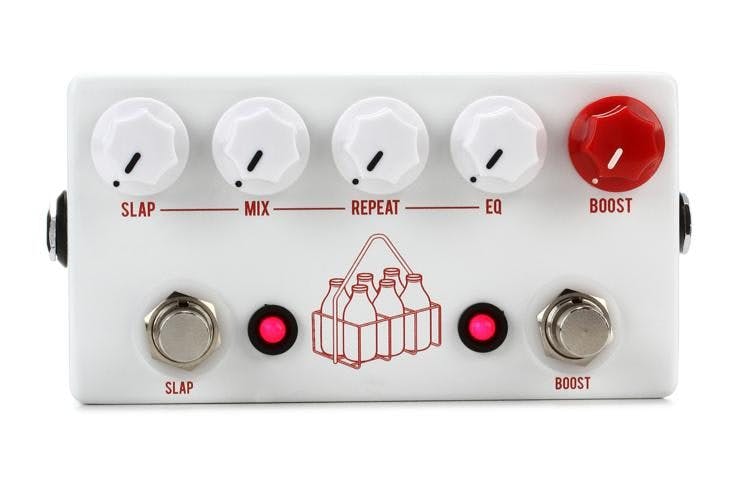
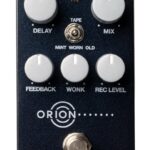
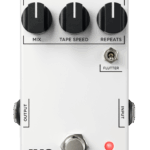
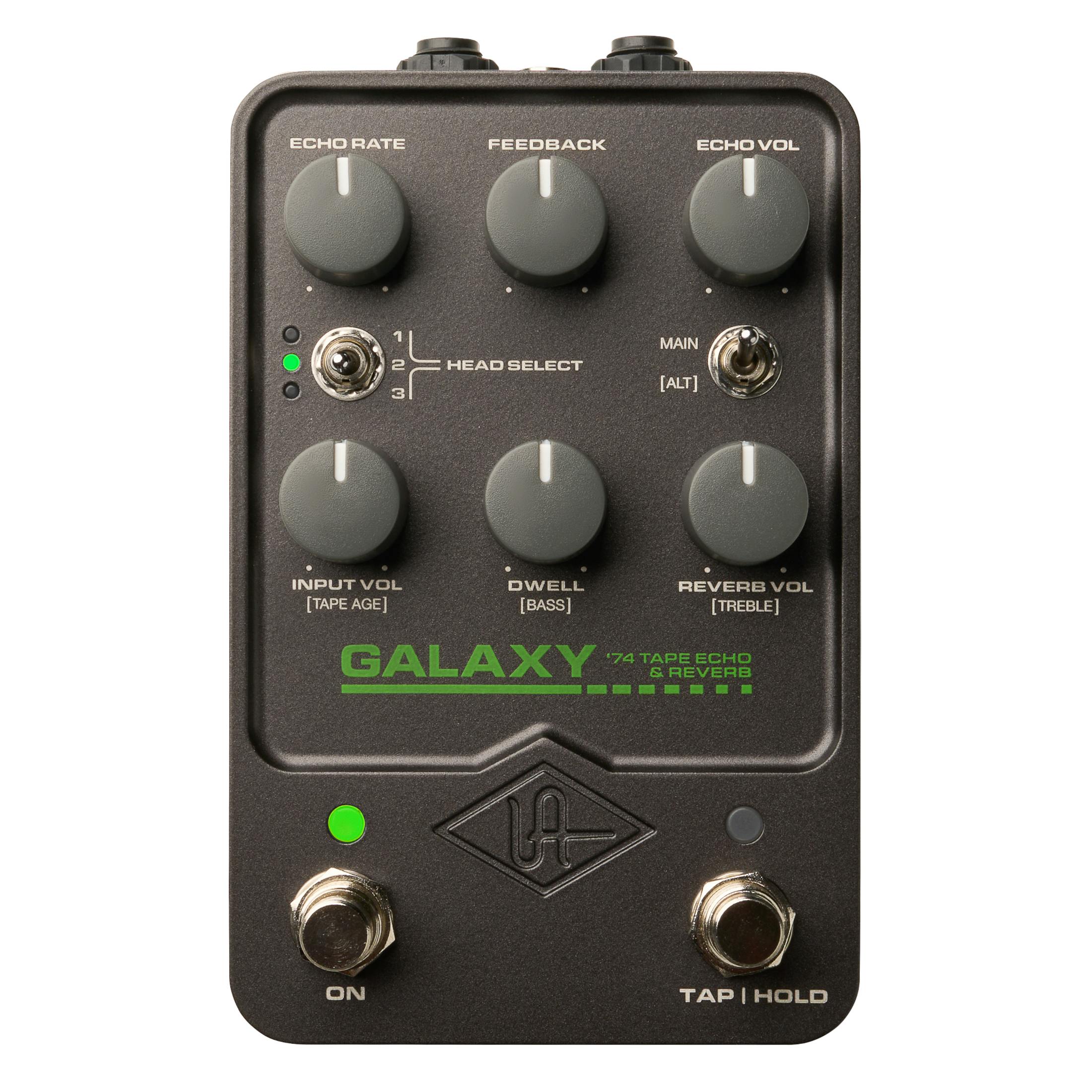

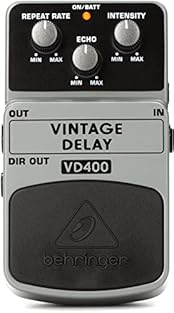
![[Analog Delay Pedal] Reproduces the warm and natural classic vintage analog delay sound. [Flexible Delay Pedal] 20ms to 620ms of delay time. Adjustable delay level and feedback. [Durable Guitar Pedal] Aluminium-alloy classic, stable and strong. [True...](https://m.media-amazon.com/images/I/41ib6iswoGL._SL313_.jpg)
![[7 Delay Modes] 7 delay effects including digital, analog, tape, mod, sweep, lofi and reverse. [3 Knobs] MIX is used to control the dry/effect signal ratio. TIME is used to control the delay time from 20ms ~ 838ms. F.BACK is used to control the feedb...](https://m.media-amazon.com/images/I/41EUFdvIhyL._SL313_.jpg)
